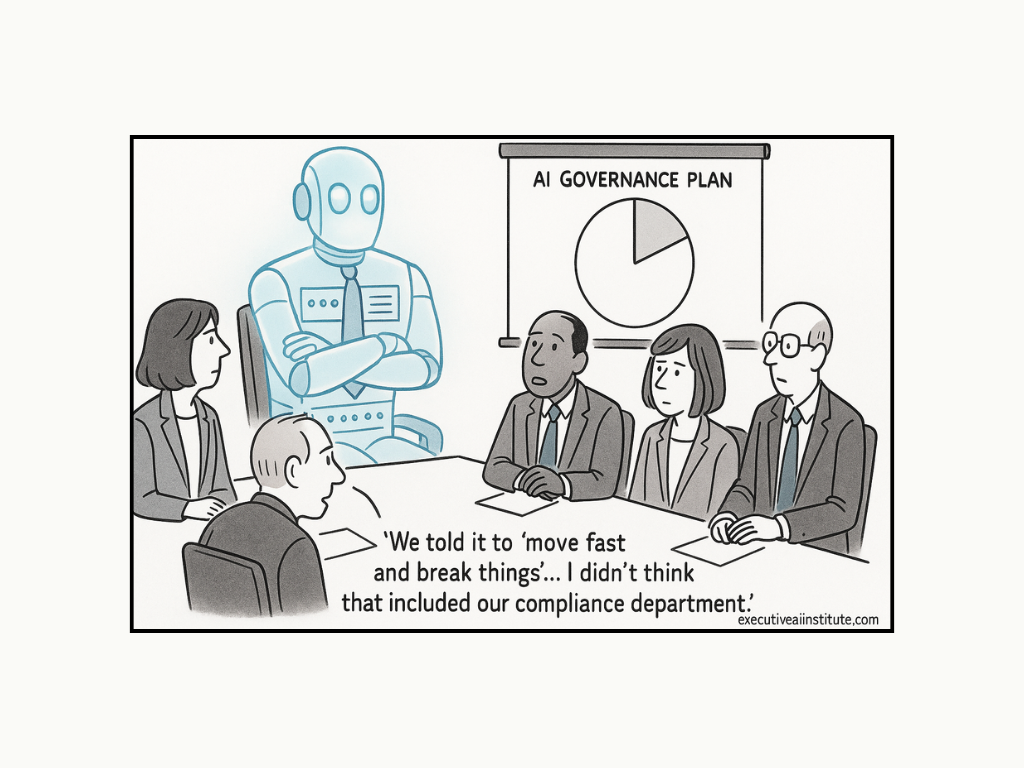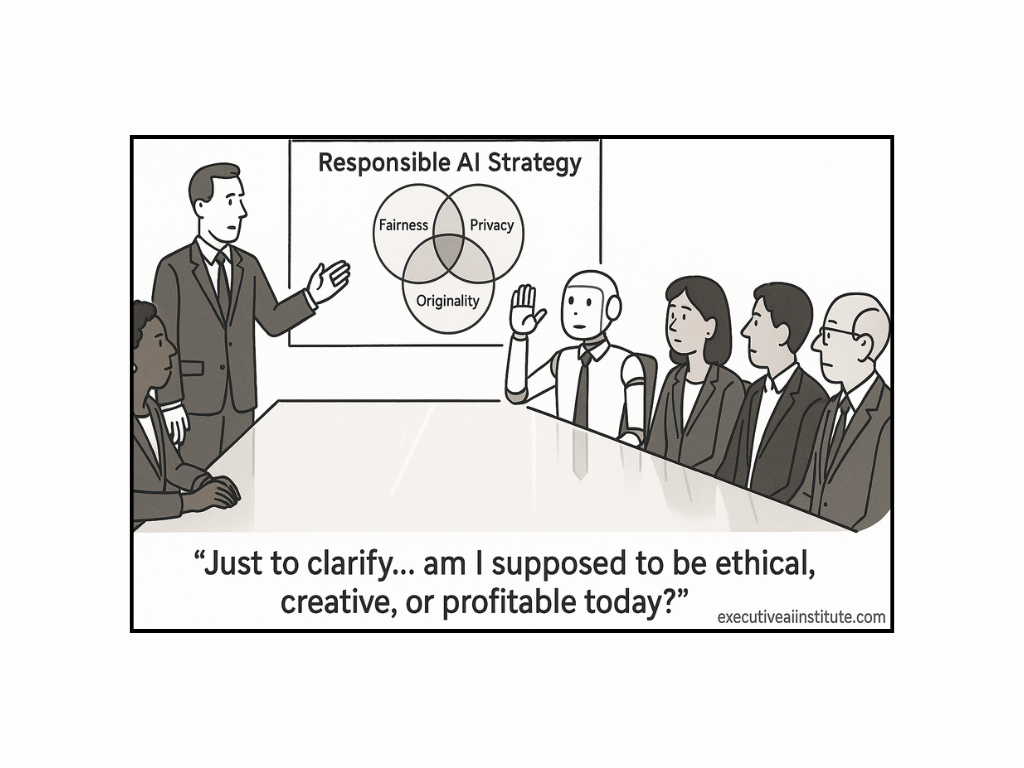Generative AI isn’t just the latest tech buzzword—it's rapidly becoming a cornerstone for innovation and competitive advantage across sectors.
But while everyone loves the shiny promise of AI, it often comes with a few unexpected surprises (and not the pleasant kind). Without careful management, generative AI can quickly slip into ethical mishaps, privacy breaches, or regulatory pitfalls. So, how can your organisation harness its transformative power while keeping risks firmly in check?
Let’s dive into building a governance model that ensures your AI initiatives remain transparent, ethical, and accountable.
WHY A GENERATIVE AI GOVERNANCE MODEL ISN’T OPTIONAL
Think of generative AI as your organisation’s newest team member—brilliant, highly capable, but without guidance, potentially a liability. The governance model you establish is like a set of guidelines and checkpoints, keeping AI aligned with your organisational values and strategic goals.
Ignoring governance can cost your organisation dearly in reputation, compliance penalties, or loss of stakeholder trust. On the other hand, a solid governance model positions your company as an innovative leader, responsibly navigating the AI era.
KEY COMPONENTS OF YOUR AI GOVERNANCE MODEL
Creating a robust governance framework doesn’t need to feel overwhelming. Break it down into these manageable pillars:
1. TRANSPARENCY AND ACCOUNTABILITY
No one trusts a black box—especially when that box is making crucial decisions.
- Clearly document how your AI systems work and make decisions.
- Specify responsibilities and establish clear lines of accountability.
- Provide easy pathways for users to question and challenge AI outcomes.
2. ETHICAL PRINCIPLES AND GUIDELINES
An AI system built without ethics can quickly go from innovative tool to headline disaster.
- Embed principles like fairness, privacy, non-discrimination, and transparency in your AI design.
- Regularly review datasets and AI decisions for bias, ensuring fairness and trustworthiness.
3. INDEPENDENT OVERSIGHT AND REGULATION
Sometimes, even the best internal checks can miss things. External oversight adds credibility and objectivity.
- Consider oversight from external ethical boards or industry regulatory bodies.
- Engage regularly with industry peers to benchmark best practices.
4. USER EDUCATION AND EMPOWERMENT
AI is only as effective as the people using it. Equip your users to interact confidently and responsibly with generative AI.
- Provide clear, intuitive interfaces, training resources, and ongoing support.
- Continuously educate users about AI limitations, empowering them to make informed decisions.
5. DATA PRIVACY AND SECURITY
Privacy isn’t a nice-to-have—it’s an absolute necessity.
- Prioritise robust encryption, strict access controls, and regular security audits.
- Be transparent about your data handling practices to maintain trust and compliance.
PRACTICAL STEPS TO LAUNCH YOUR GOVERNANCE FRAMEWORK
Here's a straightforward roadmap for getting your AI governance model off the ground:
- Engage Stakeholders Early: Involve your compliance, legal, IT, and business leaders from day one.
- Create a Clear Governance Charter: Define roles, responsibilities, and procedures clearly.
- Regularly Review and Update: AI technology evolves rapidly, and your governance model must evolve with it.
- Pilot and Scale: Begin small, test your model thoroughly, refine, and scale across your organisation.
REFLECTIVE QUESTIONS FOR STRATEGIC LEADERS
As you explore this, ask yourself and your leadership team:
- How confident are we currently in our AI governance and risk mitigation?
- Where could hidden ethical or transparency issues arise?
- Is our team genuinely ready to manage AI-driven decisions responsibly and confidently?
LEAD YOUR ORGANISATION INTO THE AI ERA
Establishing governance for generative AI isn’t about limiting creativity or innovation; it’s about maximising AI's potential responsibly. When done right, it positions your organisation not only as innovative but as a trusted leader, confidently navigating the ethical complexities of AI.
Ready to step confidently into the AI era? Your robust governance model will ensure that AI becomes your ally, not your Achilles' heel.
So, what’s your next move in shaping responsible AI governance?




